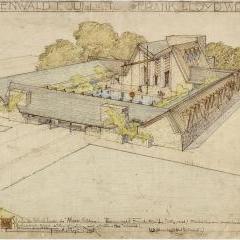Twelve Ways of Looking at Frank Lloyd Wright
News from the Web
Few things are more satisfying in the arts than unjustly forgotten figures at last accorded a rightful place in the canon, as has happened in recent decades with such neglected but worthy twentieth-century architects as the Slovenian Jože Plečnik, the Austrian Margarete Schütte-Lihotzky, the Austrian-Swedish Josef Frank, and the Italian-Brazilian Lina Bo Bardi, among others. Then there are the perennially celebrated artists who are so important that they must be presented anew to each successive generation, a daunting task for museums, especially encyclopedic ones that are expected to revisit the major masters over and over again while finding fresh reasons for their relevance.
Barry Bergdoll, the Columbia professor who served as the Museum of Modern Art’s chief curator of architecture and design from 2007 to 2013, continues to do exhibitions for the museum, and his latest, “Frank Lloyd Wright at 150: Unpacking the Archive” (which he organized with Jennifer Gray, a project research assistant at MoMA), was a more hazardous proposition than its universally beloved subject might indicate. Despite the seeming effortlessness with which the Modern has spun out popular Picasso and Matisse shows decade after decade, Bergdoll wanted to avoid rehashing its 1994 Wright retrospective or repeating material covered in more specialized exhibitions on the architect held in New York at the Whitney in 1997 and the Guggenheim in 2009.
He decided instead to organize this sesquicentennial tribute around a mere twelve projects, including rarely discussed unexecuted designs such as Wright’s Depression-era plans for a self-sufficient agricultural community and his postwar scheme for the world’s tallest skyscraper. These and others are illuminated by some 450 drawings, documents, photographs, models, and architectural fragments selected from the mountain of objects obtained by MoMA and Columbia’s Avery Architectural and Fine Arts Library when they took possession of the architect’s archives from the economically troubled Frank Lloyd Wright Foundation in 2012. Financial details of the arrangement have not been revealed, but it has been rumored that a transfer of money was involved, on terms said to be very favorable for the acquiring institutions.























